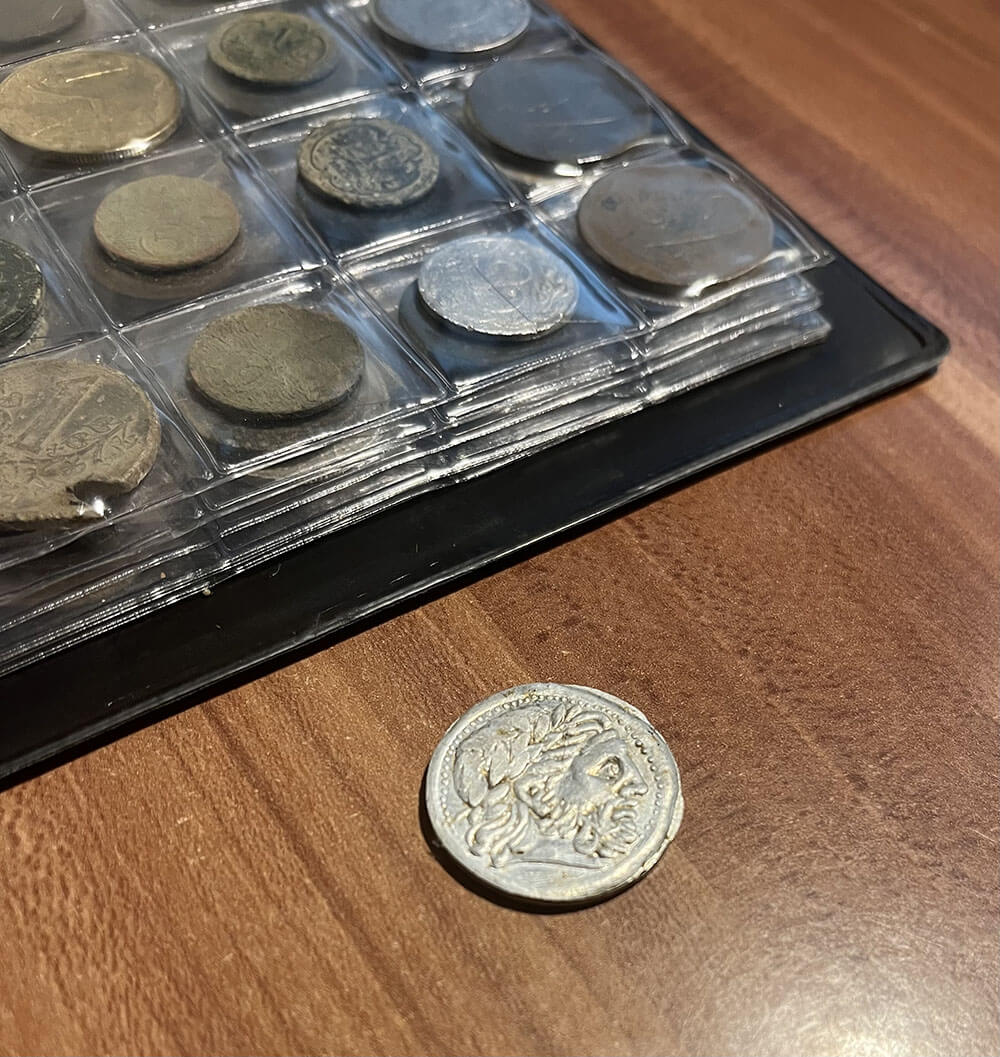minedanlab
Tenderfoot
- #1
Thread Owner
Greetings everyone,
I have just relocated to the Czech Republic with my spouse, who happens to be a native. The Czech Republic has a very rich history, so I began exploring with a metal detector. My searches have led me to uncover various items such as badges, cartridges, coins, dog tags, and rings, all dating back to World War II and the Austro-Hungarian eras. Today's find has left me puzzled, and I would appreciate your help in identifying it.
I found a "something" shaped like a coin. I write "something" because I don't know if it's actually a coin or something to play with. I found it in a deciduous forest, approx. 10 cm underground. It weighs 2 grams, and the color resembles silver or aluminum. There is some text and a face on it. It looks like ancient Greece.



What do you think about this? Could it be some sort of commemorative coin, badge, or something from modern times? After cleaning it left such yellow marks. Can you tell what kind of material it is? I used an Equinox 900 and had a steady 46-48 signal.
I have just relocated to the Czech Republic with my spouse, who happens to be a native. The Czech Republic has a very rich history, so I began exploring with a metal detector. My searches have led me to uncover various items such as badges, cartridges, coins, dog tags, and rings, all dating back to World War II and the Austro-Hungarian eras. Today's find has left me puzzled, and I would appreciate your help in identifying it.
I found a "something" shaped like a coin. I write "something" because I don't know if it's actually a coin or something to play with. I found it in a deciduous forest, approx. 10 cm underground. It weighs 2 grams, and the color resembles silver or aluminum. There is some text and a face on it. It looks like ancient Greece.



What do you think about this? Could it be some sort of commemorative coin, badge, or something from modern times? After cleaning it left such yellow marks. Can you tell what kind of material it is? I used an Equinox 900 and had a steady 46-48 signal.



 Thanks for sharing with us . Good luck in your future hunts !! Welcome to a very fine forum 11
Thanks for sharing with us . Good luck in your future hunts !! Welcome to a very fine forum 11